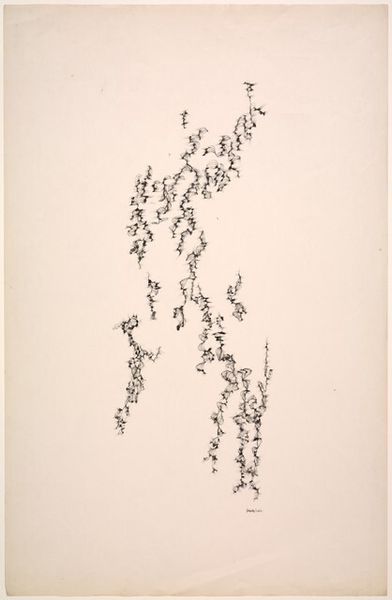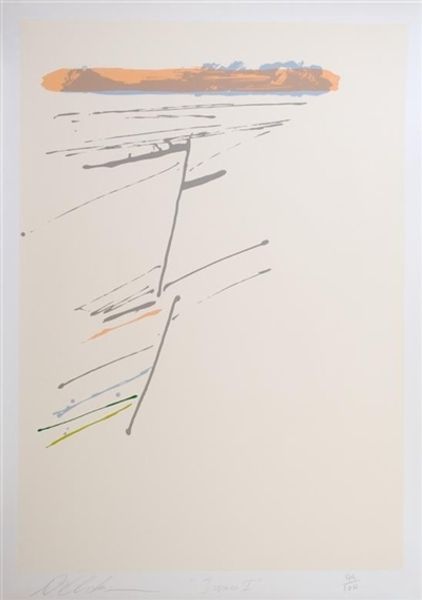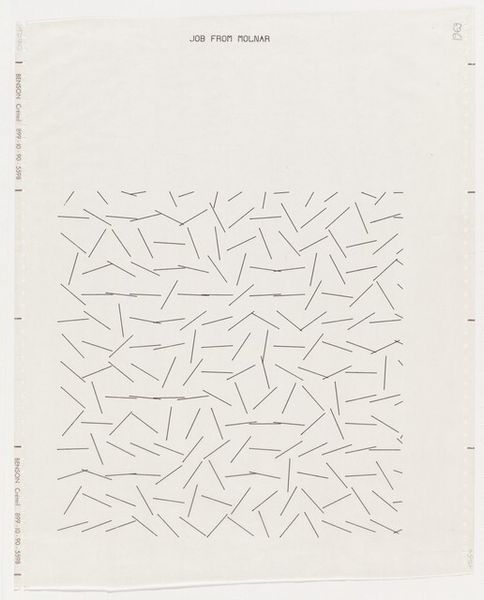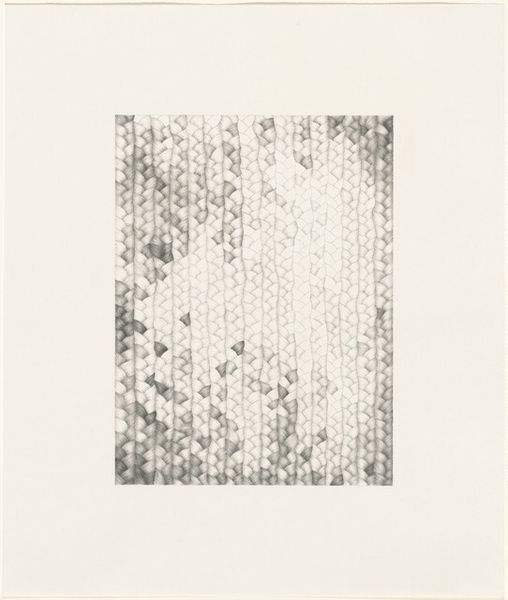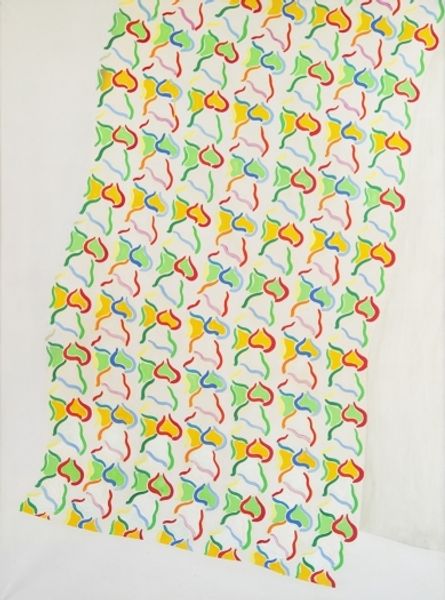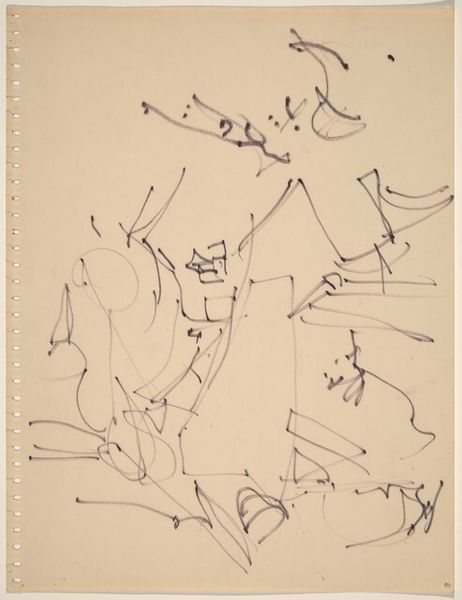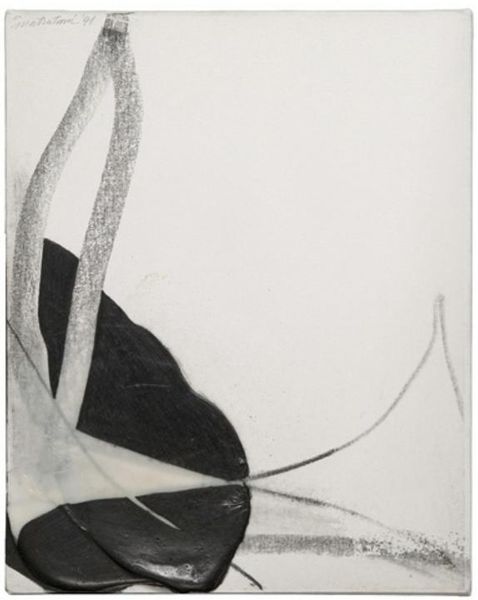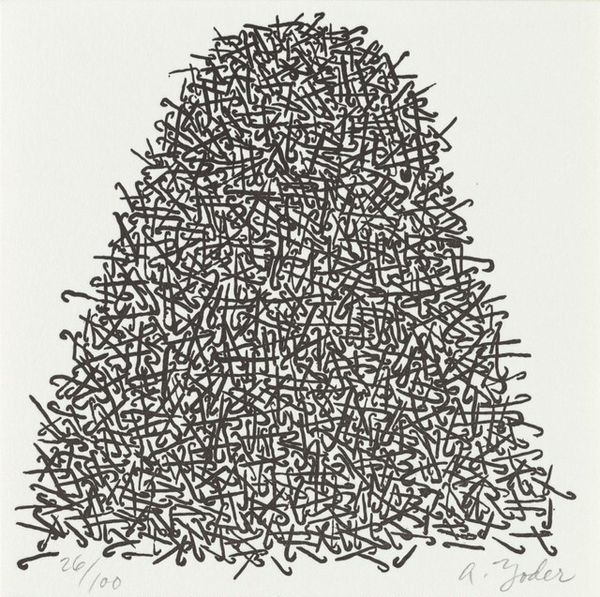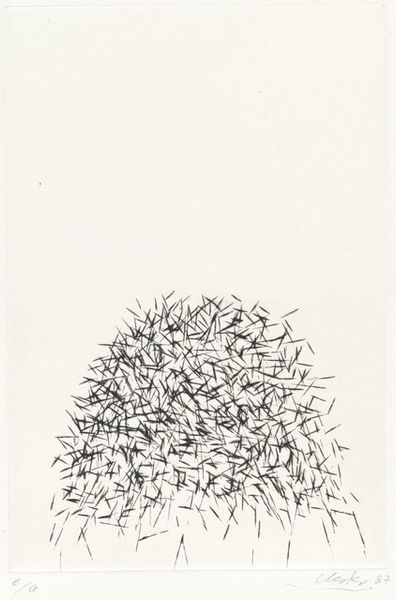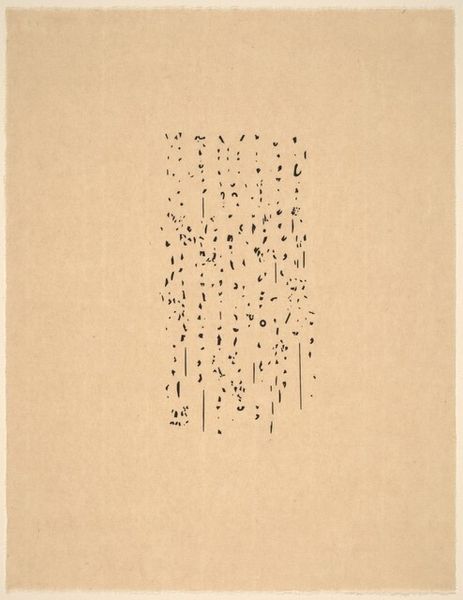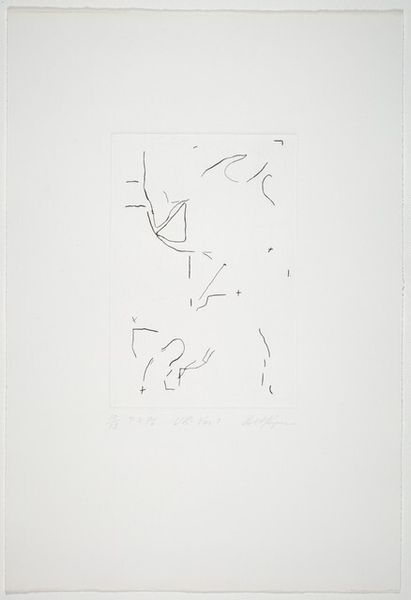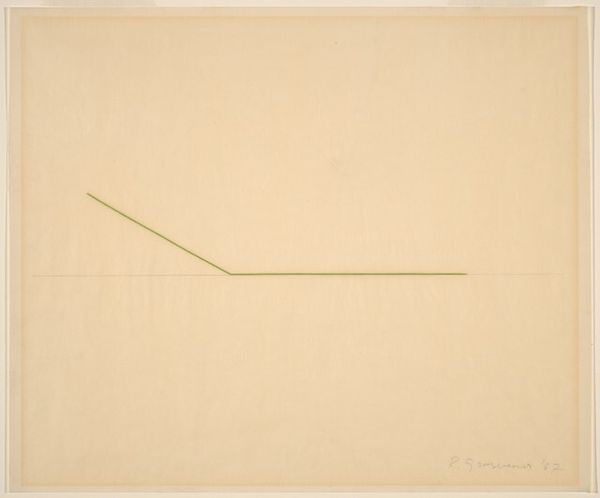
drawing
#
drawing
#
conceptual-art
#
geometric
#
abstraction
#
line
Dimensions: sheet: 42.86 × 34.93 cm (16 7/8 × 13 3/4 in.)
Copyright: National Gallery of Art: CC0 1.0
Curator: Let's discuss Agnes Denes’s drawing, "The Magic Mountain," created in 1982. Editor: The initial impact is striking; its minimalist quality evokes a sense of stark simplicity and yet feels monumental. The meticulous lines pull the eye upwards towards the apex of the triangular structure, and one is struck by its stark lines on that bright white ground. Curator: Indeed. Denes often intersects environmental concerns with social commentary. "The Magic Mountain," while visually simple, could be seen as a symbolic representation of hierarchies within social structures and the struggles of the collective against those imposed constraints. Each tiny mark representing an individual, forming a system straining toward a single, central point. Editor: From a formal standpoint, the linear construction and perspective trick the eye. Do you agree that Denes utilizes the minimalist arrangement to amplify the viewers’ own perception of space and scale? The drawing seems to almost breathe on the page. Curator: Precisely! It also speaks to how conceptual art can dissect and reimagine inherited power structures. In many ways it offers a critical viewpoint about issues of dominance, marginalization and aspiration across lines of race, class, gender and power. Denes's choice of a deceptively "simple" structure serves to universalize those problems. Editor: Yes, I see it now. It really comes through. The simplicity is effective for expressing a visual language. By stripping away conventional markers, Denes provides what feels like a skeletal framework and lays bare fundamental issues. What is it to be part of such a huge mass, drawn by the forces pushing to the top? The use of negative space accentuates the sense of solitude embedded in this mass collective, like stars, barely there, and far away. Curator: It asks a fundamental question about how social change happens and the roles people assume. To me, its most enduring quality remains that potent tension between aesthetic spareness and potent, socially-embedded concepts. Editor: I appreciate that way to reflect, seeing this mountain is not just about its structure, it is a framework, a model to examine bigger questions about human experience.
Comments
No comments
Be the first to comment and join the conversation on the ultimate creative platform.

